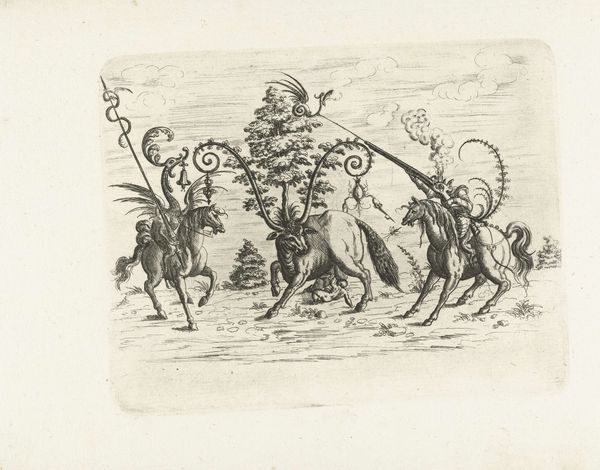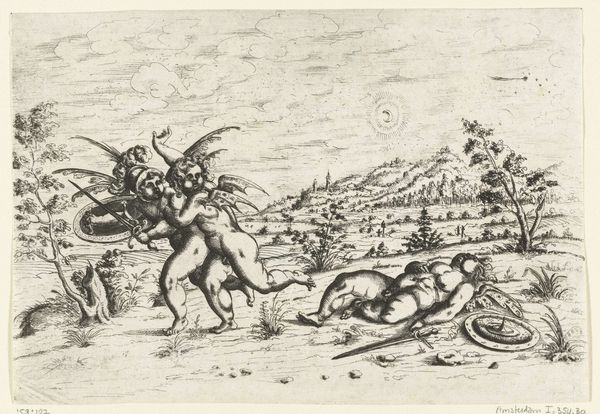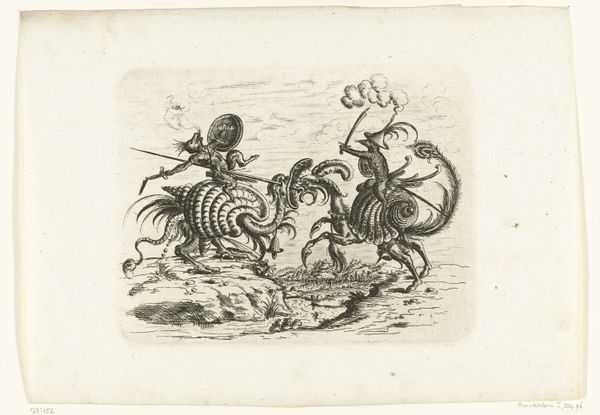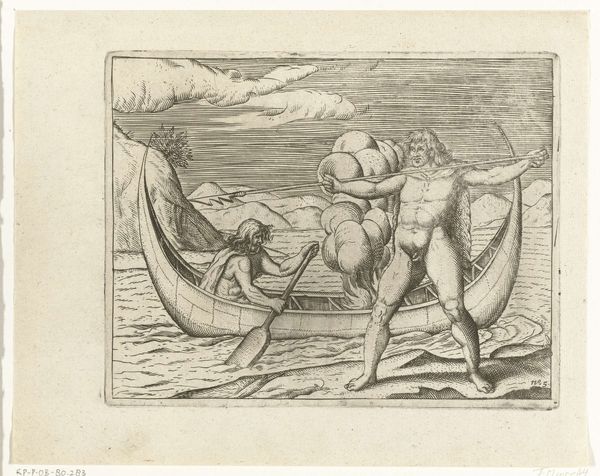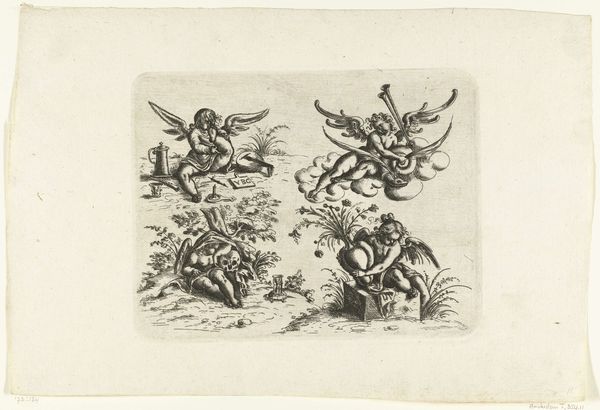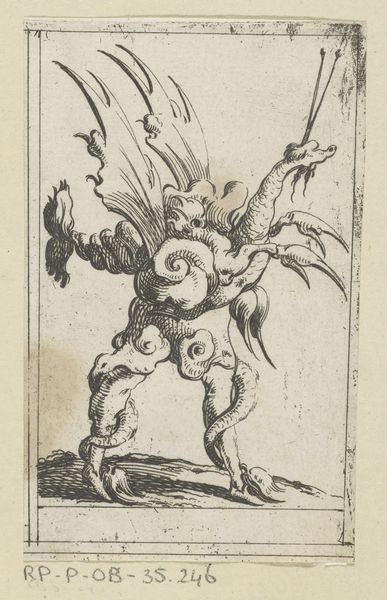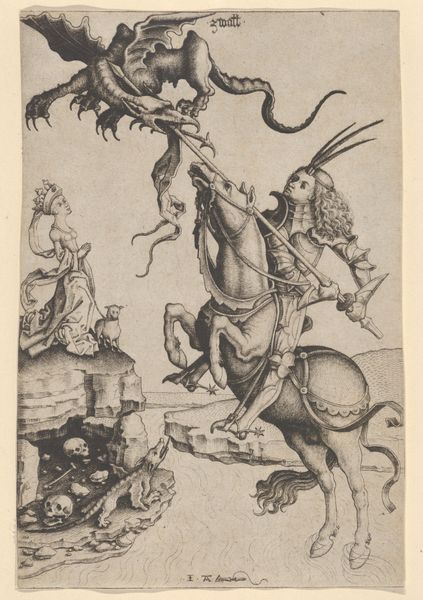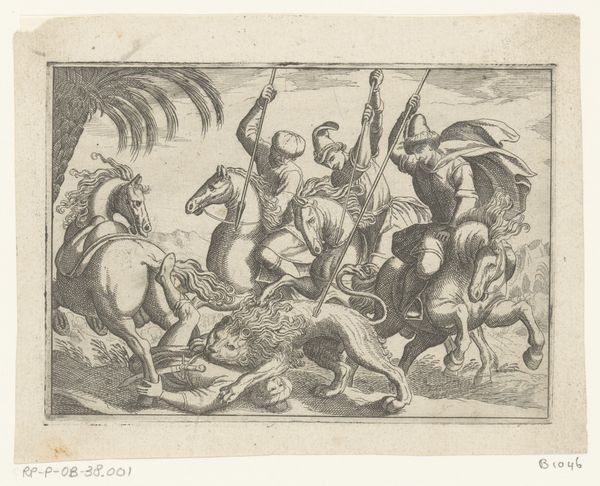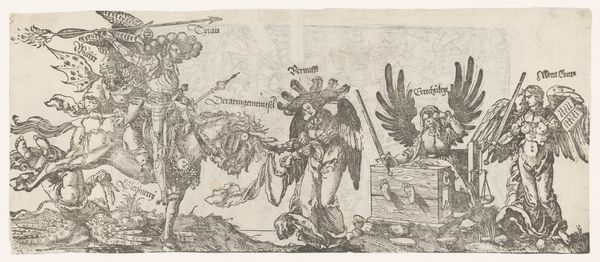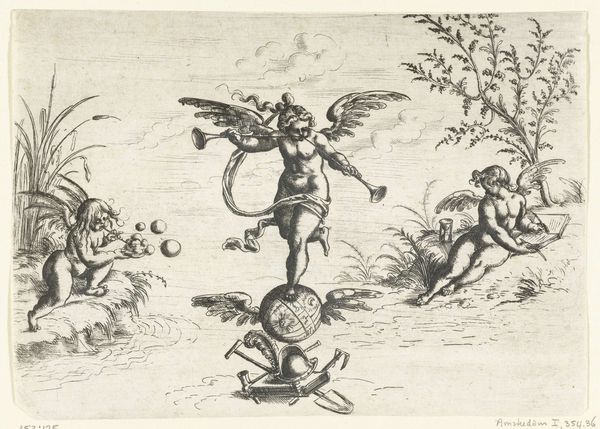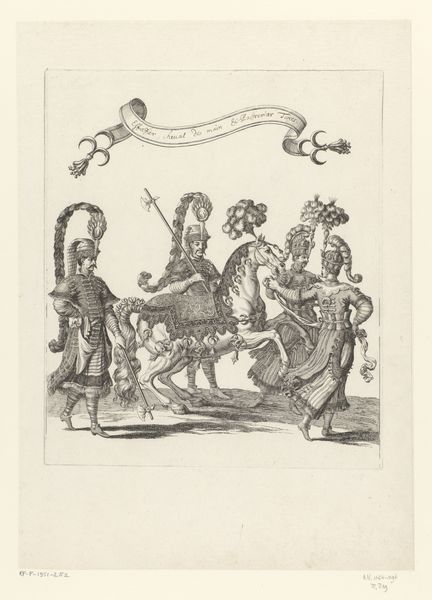
print, engraving
#
allegory
#
baroque
# print
#
pen sketch
#
figuration
#
history-painting
#
engraving
Dimensions: height 144 mm, width 184 mm
Copyright: Rijks Museum: Open Domain
Curator: Before us, we have a piece titled "Three Embracing Putti on a Clover-Shaped Plateau," likely created between 1573 and 1610, attributed to Christoph Jamnitzer. It’s an engraving, a print, exploring allegorical themes and figuration within a baroque aesthetic. Editor: My initial feeling? A slightly unsettling lightness. It’s whimsical but with a weird militant edge. There's almost too much detail jammed in—those tiny trees seem plucked from a fever dream. Curator: Precisely. Observe the careful use of line and texture. The contrast between the smoothness of the putti’s bodies and the detailed ornamentation of their surroundings generates tension. Consider, too, the iconographic program. A winged figure in full military garb occupies one side, a flag-bearing putto on the other, flanking this central cluster. Editor: The military guy… he’s hilarious! And his face is very severe for standing naked next to a tiny fir tree! Those clover-shaped pedestals remind me of cake stands—maybe this scene is some weird birthday party from hell. It all feels deeply performative and allegorical, but it is strange. Curator: Indeed, one reads into the baroque celebration of abundance and spectacle, with these classical figures performing specific, possibly obscure, symbolic roles. The formal dynamism inherent in their intertwining form acts to engage the viewer through artifice. The clover form on which the cherubs embrace lends further emphasis to this artifice by means of calculated irregularity. Editor: So, is it some Renaissance comment on... childhood innocence confronted by war, rendered through the aesthetics of party supplies? It is like a dream and the closer you examine its elements, the weirder the whole thing gets. But you can’t tear yourself away. Curator: Perhaps it’s a symbolic contemplation of youthful virtue beset by earthly conflict, encapsulated within the decorative sensibilities typical of the era. Editor: So we end up where we began—lightness laced with unease. And just when I think I get it, it melts away, leaving me delighted by the artistry of its chaos. Curator: Agreed. A perfect summation of its intricate allure.
Comments
No comments
Be the first to comment and join the conversation on the ultimate creative platform.
